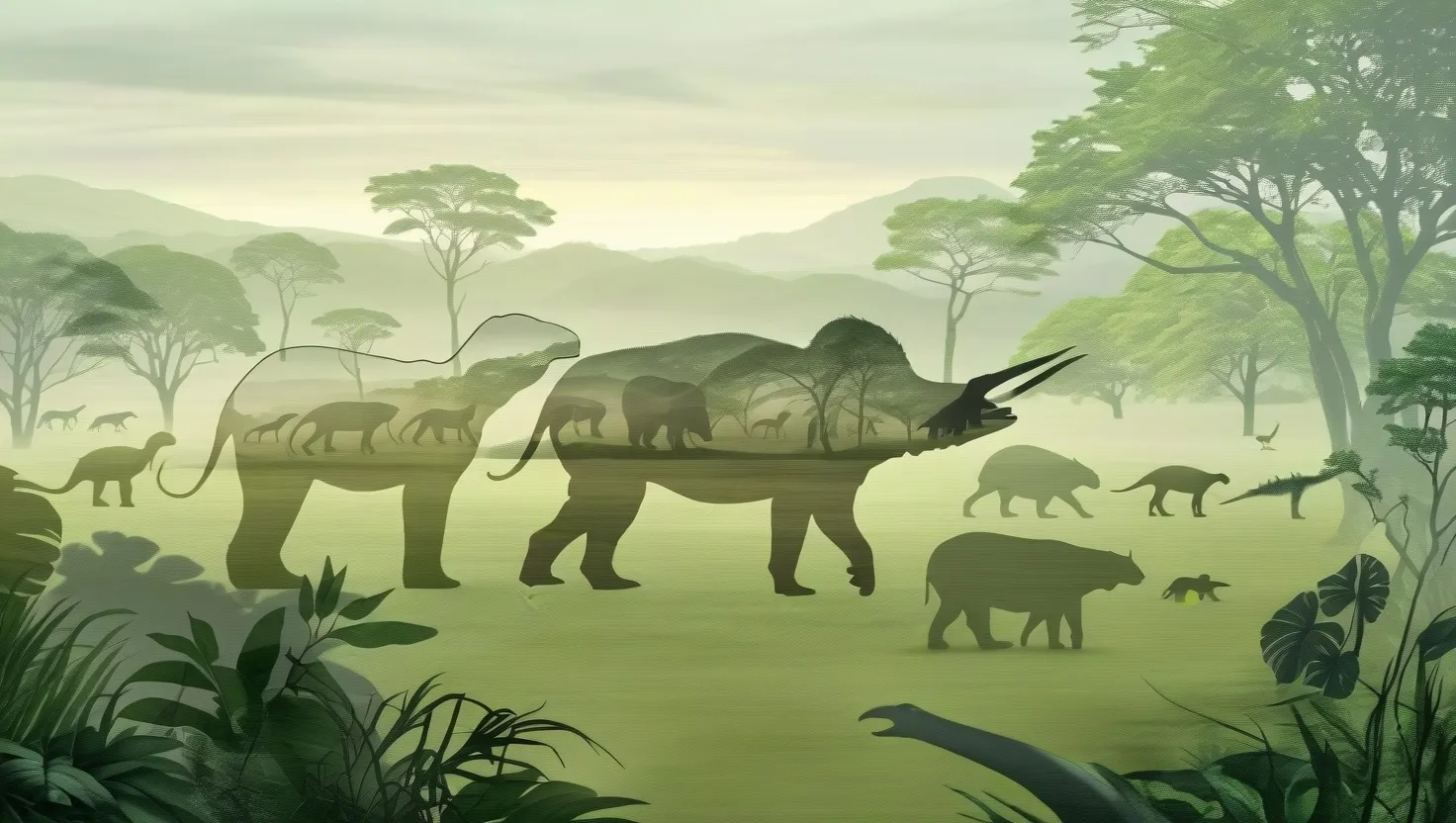When we think about extinction, we often imagine it as a final and absolute end – a species vanishes, and it’s gone forever. However, a fascinating and somewhat mind-bending theory suggests that extinct animals might be leaving behind more than just fossils and memories. This concept, rooted in the realm of quantum biology, proposes that the energy patterns of vanished species could persist at a subatomic level, subtly influencing our world in ways we are only beginning to understand.
To delve into this idea, let’s start with the basics of quantum biology. This field explores how quantum mechanics, the branch of physics that deals with the behavior of subatomic particles, applies to living systems. It’s an area that has gained significant attention in recent years, particularly in understanding processes like photosynthesis and the functioning of enzymes. In these contexts, quantum effects such as entanglement and superposition play crucial roles, allowing biological systems to operate with efficiencies that defy classical explanations[4].
Now, let’s consider the zygotic unicell, the single cell from which a multicellular organism develops. This cell operates in a realm where quantum mechanics is not just a theoretical framework but a practical reality. It arbitrates biologic space-time in a way that is both present and future-oriented, using current environmental cues to predict and adapt to future conditions. This quantum capacity allows the unicell to influence its future and past simultaneously, effectively making it a quantum agency that settles superimposed possibilities on a constant basis[1].
Extending this idea to extinct species, we might ask whether the energy patterns or quantum states associated with these organisms could persist after their physical bodies are gone. This is where the concept of “quantum echoes” comes into play. Imagine these echoes as residual imprints of the quantum states that once defined a living species. These imprints could, in theory, continue to influence ecosystems and even the genetic makeup of modern species.
One of the most intriguing aspects of this theory is its potential to explain certain phenomena that have puzzled scientists and the general public alike. For instance, phantom animal sightings – reports of seeing animals that are known to be extinct – could be interpreted as glimpses of these quantum echoes. These sightings are often dismissed as misidentifications or hoaxes, but what if they are actually manifestations of a lingering quantum presence?
Another area where this theory gains traction is in the occasional reemergence of supposedly extinct traits in modern species. This can be seen in the field of de-extinction, where scientists aim to bring back extinct species or create functional equivalents. For example, the woolly mammoth project involves introducing mammoth-like traits into Asian elephants to help them adapt to Arctic environments. This process relies on genetic engineering, but it also hints at a deeper, quantum-level connection between species across time[3].
The idea that we might be surrounded by invisible imprints of life’s past raises several questions about the nature of extinction and the lasting impact of life on our planet. If these quantum echoes exist, could they be tapped into or harnessed in some way? Could this allow us to reconstruct lost biodiversity or even bring back extinct creatures?
To explore this possibility, let’s look at the current state of de-extinction research. Scientists are already working on creating proxies for extinct species, not to resurrect them exactly but to fill the ecological niches they once occupied. For instance, the cloning of the bucardo, a species of wild goat, in 2003 showed that while we can’t bring back an exact genetic replica, we can create a functional equivalent that serves a similar ecological role[3].
However, the challenges in de-extinction are significant. DNA degradation over time makes it nearly impossible to reassemble the entire genome of an extinct species. Even in well-preserved tissues, DNA fragments are tiny and cannot be reassembled like puzzle pieces. This is why de-extinction researchers often focus on creating proxies rather than exact replicas[3].
Despite these challenges, the concept of quantum echoes suggests a more profound connection between extinct and extant species. If we can tap into these echoes, we might uncover new ways to restore biodiversity and understand the intricate web of life that binds all species together.
Research into the impact of extinctions on ecosystems also supports this idea. Studies have shown that large-bodied mammals, for example, play crucial roles in shaping their environments. Their loss can have cascading effects on ecosystems, affecting everything from habitat creation to wildfire patterns. By examining the past and how mammal traits evolved with their environments, scientists can gain insights into how to conserve and restore ecosystems[5].
The notion that extinct species could leave behind quantum echoes challenges our traditional understanding of extinction as a permanent state. It invites us to consider the possibility that life’s energy patterns persist in ways that are both subtle and profound. While this idea may seem like the realm of science fiction, it is grounded in the emerging field of quantum biology and the complex interplay between living systems and their environments.
In conclusion, the theory of quantum echoes from extinct species is a compelling one that opens up new avenues for understanding the natural world. It suggests that the ghosts of evolution are still haunting our reality at the quantum level, leaving behind imprints that could be harnessed to restore biodiversity and reconnect with the past. Whether this is wishful thinking or a revolutionary new perspective, it certainly prompts us to question everything we thought we knew about extinction and the lasting impact of life on our planet. As we continue to explore this idea, we may uncover secrets that have been hidden in the quantum fabric of our world, waiting to be discovered.






